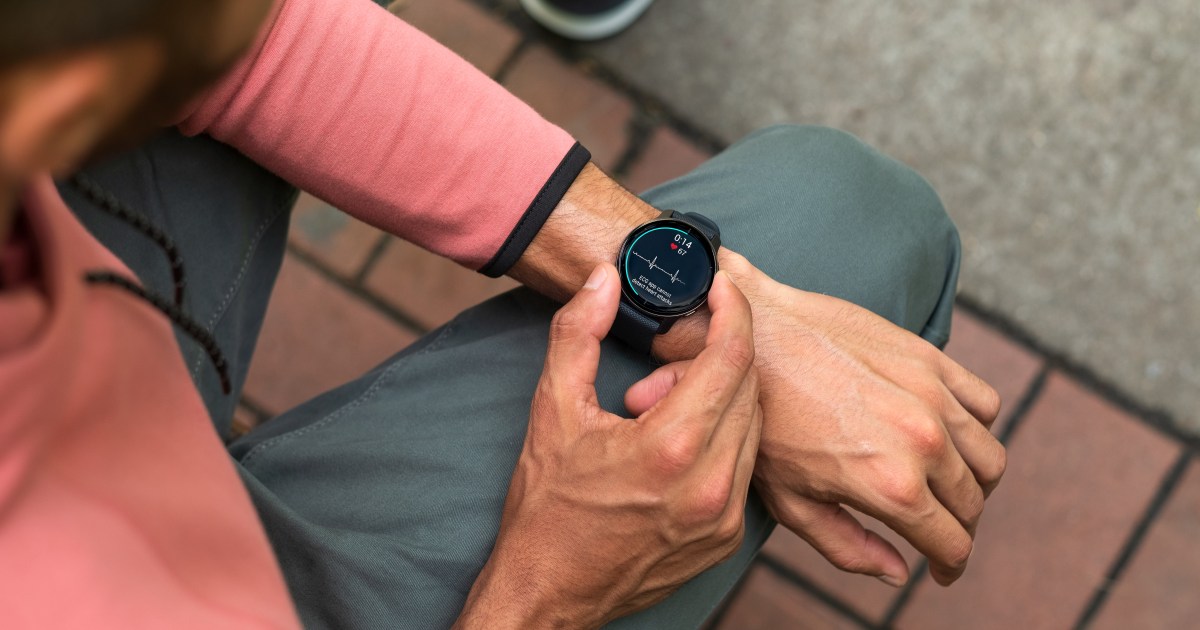The First Over-the-Counter Continuous Glucose Monitor: Is It Right for You?

On March 5, the U.S. Food and Drug Administration (FDA) approved the first over-the-counter continuous glucose monitor, intended for people who have type 2 diabetes but who do not take insulin to manage their condition. The device, first available this summer, can also be used by people without diabetes but who want to know how their diet and physical activity affect their blood glucose, or sugar, levels.
The monitor consists of a wearable sensor, which is paired with a smartphone app, that continuously measures, records, and displays glucose values.
“There are definitely pros and cons to making a nonprescription form of this device available,” said NYU Langone endocrinologist Michael B. Natter, MD, who is a clinical assistant professor in the Department of Medicine and a member of its Division of Endocrinology, Diabetes, and Metabolism at NYU Grossman School of Medicine. One benefit is the device helps people who need to keep track of their glucose levels but who are unable to access a continuous glucose monitor through their insurance. It also has the potential to pick up undiagnosed diabetes and prediabetes. However, people who have healthy glucose fluctuations may end up unnecessarily worrying about normal blood sugar shifts.
“As an endocrinologist, I think that there should be some guidance in interpreting the glucose data gathered by these devices,” he said. “It’s safest to have a medical professional analyze glucose changes, make an appropriate diagnosis, develop a treatment plan, or make medication adjustments.”
Device May Help with Type 2 Diabetes Monitoring
People who have type 2 diabetes that is managed with oral medications and lifestyle changes but who don’t want to stick their finger several times daily to check blood sugar may benefit from an over-the-counter continuous glucose monitor, said Dr. Natter.
“Not monitoring blood glucose is like trying to fly an airplane with a blindfold on,” he said. “You know that you’re in the air, but you don’t know how fast you’re going or whether you’re going up or down. A continuous glucose monitor effectively takes that blindfold off.”
Knowing your glucose levels can help you make daily decisions about medication dosing, nutrition, and physical activity, all of which help regulate blood sugar, or it may encourage you to see your doctor. Over time, glucose levels that are too high can damage organs, including the eyes, kidneys, and heart, while levels that are too low can cause symptoms such as dizziness, shakiness, sweating, and fatigue and are acutely dangerous.
The new over-the-counter continuous glucose monitor is not designed to monitor glucose levels that are significantly low, a condition called severe hypoglycemia that can be life-threatening. In addition, the over-the-counter device is not indicated for people taking insulin to control their diabetes. These patients use prescription continuous glucose monitors, and the data from them should be reviewed by a doctor, said Dr. Natter.
Potential Price Barriers
While the FDA clearance of the device was aimed at expanding people’s access to continuous glucose monitors without the involvement of a healthcare provider, Dr. Natter anticipates some price barriers.
“A potential obstacle lies in the yet-to-be-determined price, which could be prohibitively high,” he said. This creates a situation where people who have means can buy the monitor, while those who don’t have means can’t. And, to me, that’s a big ethical issue.”
Ideally, all patients with any glucose variability or actual diabetes should have access to continuous glucose monitors, whether prescription or over the counter, to support equal access to care, he added.
Jury Is Out on the “Glucose Curious”
Making the device readily available over the counter means people with no symptoms or risk factors for diabetes can wear one.
“There’s an argument to be made that the device offers a screening component, where you might pick up very early prediabetes or undiagnosed diabetes,” said Dr. Natter. However, an efficient means of screening for diabetes already exists—a simple hemoglobin A1C blood test, which measures your average blood sugar level over a three-month period.
People without diabetes may also misinterpret glucose values. Continuous glucose monitors do not directly measure glucose levels in the blood, said Dr. Natter. They’re measuring the flux of glucose in the interstitial fluid, which is in the space between cells. Glucose data from a finger stick or blood draw vary from data collected from a continuous monitor, and people may not be aware of these differences.
Dr. Natter is concerned that some of the normal glucose spikes that the continuous glucose monitor may register after a meal may be misconstrued. “A lot of people without any kind of diabetes may have what we call a postprandial—or normal after-meal—blood sugar spike,” he said. People may be tempted to start avoiding or demonizing otherwise healthy foods that spike their sugar, even if this fluctuation is within a normal range.
Postmeal glucose elevations that are picked up by the sensors may be misinterpreted as a warning sign, causing undue psychological harm and driving people to unnecessary doctor appointments, said Dr. Natter. “There can certainly be a downside to having too much data.”
Read more from yahoo!life.
link








